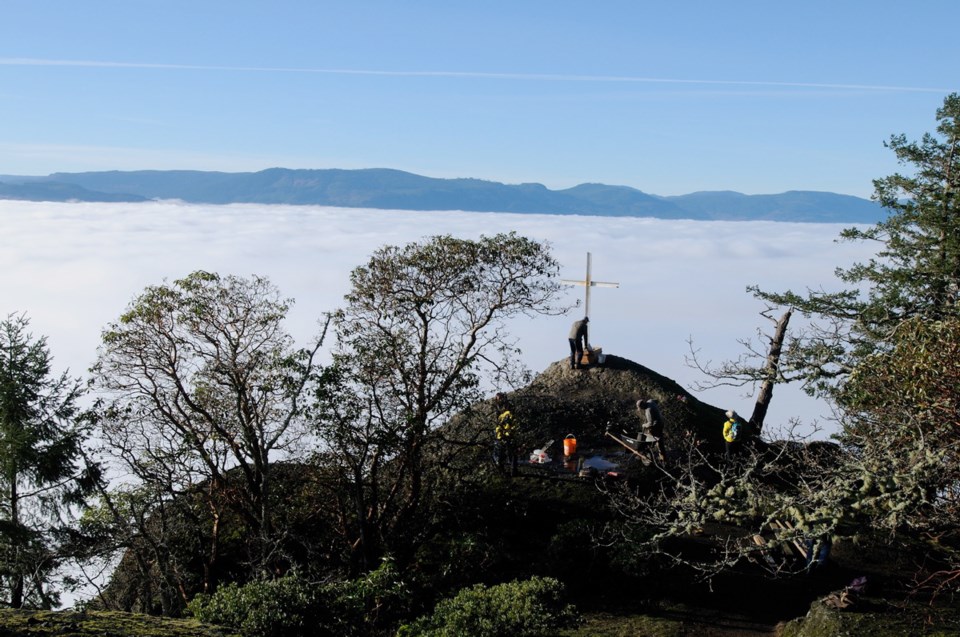Jack Pearce has raised a cross on Mount Tzouhalem twice before, but as he watched a group of men take sledgehammers to make way for a new base, he said this will be his last.
“I won’t be doing it a fourth time,” said Pearce, a former chairman of nearby Providence Farm, from the summit on Tuesday.
“I’m 70-something now.”
The white cross, which stands about 400 metres up the steep bluffs of Mount Tzouhalem, is a popular destination for hikers and bikers. They stop to take in an expansive view of the Cowichan Valley and, when the fog lifts, a glimpse of Victoria.
It has a decades-old history involving local churches and First Nations, but is now the property of the Nature Conservancy of Canada, which protects 100 acres of land in the area known as Chase Woods.
The group purchased the tract in 2009 for its ecological value as home to old-growth Douglas firs, centuries-old western yew, Garry oaks, lodgepole pines and arbutus.
So when the cross toppled into a gully following a windstorm in November, the conservancy was faced with an unusual question: Not being a religious organization, should it remount the icon?
“We live in an increasingly pluralistic society. The NCC is not an advocacy group, partisan group or religious group, we’re a science-based organization,” said Tim Ennis, the group’s West Coast program director.
“So a big motif like a cross is not something we would set about to install on one of our properties.”
The conservancy consulted with the community and the response, Ennis said, was overwhelmingly one-sided — put the cross back up.
The site has a rich history. According to the municipality of North Cowichan’s website, the mountain was originally called Shkewetsen, meaning “basking in the sun,” after a huge rock that resembles a frog warming itself in the sun.
It was renamed Tzouhalem after a warrior who lived in a cave on the mountain and died in 1859.
Conflicting accounts say that the first cross was erected in either the 1950s or in 1976. Dozens of people, including congregation members of St. Ann’s and St. Edward’s parishes and Cowichan Tribe members, made a pilgrimage up the mountain carrying the 90-kilogram cross. It was part of an enactment on Good Friday of the stations of the cross, acknowledging the different stages in Jesus Christ’s crucifixion.
But the first cross was wooden and vulnerable to deterioration and vandals. It was replaced more than once, most recently in the 1980s. Pearce helped erect the last wooden cross.
“That one mysteriously got chopped down,” he said.
In response, Pearce and three other men had a steel cross welded and painted in Crofton in 1988 as a replacement. It had stood on the bluff since.
As he prepared to replace the base, Ennis said the cross added a different kind of value to the ecological space.
“It added another dimension of cultural interest in the property,” he said.
For Pearce, it will remain a destination to visit with his family.
“My kids grew up here in the valley, so we used to hike up here. I’ve hiked up here with my grandchildren,” he said.
“It looks right down on the valley itself.”



